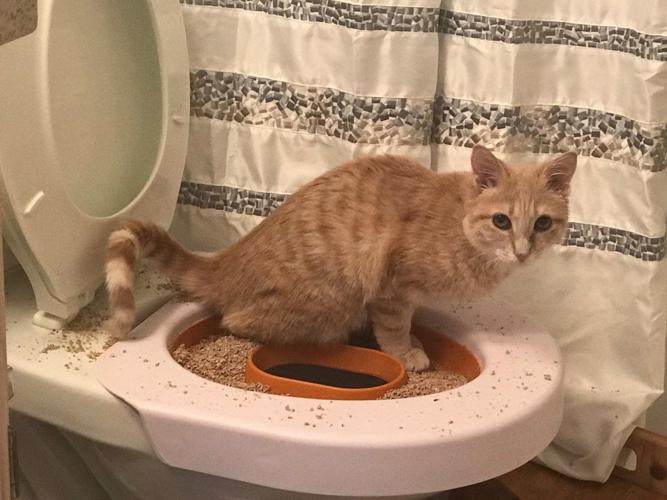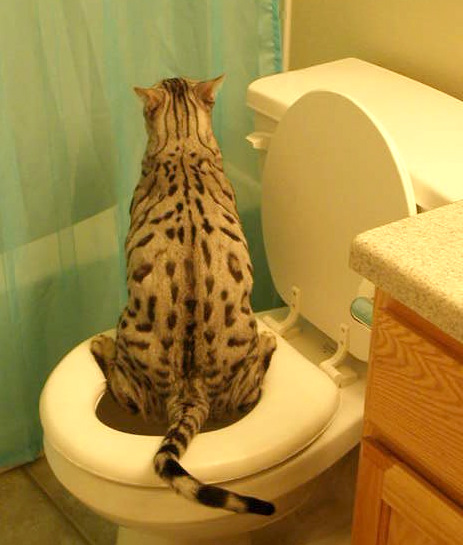Do you find yourself interested in content concerning How to Dispose of Cat Poop and Litter Without Plastic Bags?

Intro
As cat proprietors, it's essential to bear in mind exactly how we get rid of our feline good friends' waste. While it might appear practical to purge cat poop down the commode, this practice can have detrimental effects for both the atmosphere and human health.
Ecological Impact
Flushing pet cat poop presents dangerous pathogens and bloodsuckers right into the water supply, posing a considerable risk to aquatic environments. These pollutants can negatively impact aquatic life and compromise water top quality.
Health and wellness Risks
Along with ecological worries, purging pet cat waste can additionally posture health risks to human beings. Pet cat feces may contain Toxoplasma gondii, a parasite that can cause toxoplasmosis-- a possibly serious ailment, specifically for pregnant women and people with damaged immune systems.
Alternatives to Flushing
Luckily, there are safer and a lot more accountable means to get rid of cat poop. Take into consideration the adhering to alternatives:
1. Scoop and Dispose in Trash
One of the most common method of taking care of pet cat poop is to scoop it into a biodegradable bag and toss it in the garbage. Be sure to use a committed clutter inside story and deal with the waste quickly.
2. Usage Biodegradable Litter
Opt for biodegradable feline clutter made from products such as corn or wheat. These clutters are eco-friendly and can be safely disposed of in the trash.
3. Bury in the Yard
If you have a backyard, think about burying pet cat waste in a designated area away from veggie gardens and water resources. Be sure to dig deep sufficient to stop contamination of groundwater.
4. Mount a Pet Waste Disposal System
Buy a family pet garbage disposal system especially made for cat waste. These systems use enzymes to break down the waste, lowering smell and ecological impact.
Verdict
Liable animal ownership prolongs past providing food and sanctuary-- it also involves correct waste management. By avoiding purging feline poop down the bathroom and selecting alternative disposal approaches, we can decrease our environmental impact and protect human health and wellness.
Why Can’t I Flush Cat Poop?
It Spreads a Parasite
Cats are frequently infected with a parasite called toxoplasma gondii. The parasite causes an infection called toxoplasmosis. It is usually harmless to cats. The parasite only uses cat poop as a host for its eggs. Otherwise, the cat’s immune system usually keeps the infection at low enough levels to maintain its own health. But it does not stop the develop of eggs. These eggs are tiny and surprisingly tough. They may survive for a year before they begin to grow. But that’s the problem.
Our wastewater system is not designed to deal with toxoplasmosis eggs. Instead, most eggs will flush from your toilet into sewers and wastewater management plants. After the sewage is treated for many other harmful things in it, it is typically released into local rivers, lakes, or oceans. Here, the toxoplasmosis eggs can find new hosts, including starfish, crabs, otters, and many other wildlife. For many, this is a significant risk to their health. Toxoplasmosis can also end up infecting water sources that are important for agriculture, which means our deer, pigs, and sheep can get infected too.
Is There Risk to Humans?
There can be a risk to human life from flushing cat poop down the toilet. If you do so, the parasites from your cat’s poop can end up in shellfish, game animals, or livestock. If this meat is then served raw or undercooked, the people who eat it can get sick.
In fact, according to the CDC, 40 million people in the United States are infected with toxoplasma gondii. They get it from exposure to infected seafood, or from some kind of cat poop contamination, like drinking from a stream that is contaminated or touching anything that has come into contact with cat poop. That includes just cleaning a cat litter box.
Most people who get infected with these parasites will not develop any symptoms. However, for pregnant women or for those with compromised immune systems, the parasite can cause severe health problems.
How to Handle Cat Poop
The best way to handle cat poop is actually to clean the box more often. The eggs that the parasite sheds will not become active until one to five days after the cat poops. That means that if you clean daily, you’re much less likely to come into direct contact with infectious eggs.
That said, always dispose of cat poop in the garbage and not down the toilet. Wash your hands before and after you clean the litter box, and bring the bag of poop right outside to your garbage bins.
https://trenchlesssolutionsusa.com/why-cant-i-flush-cat-poop/

As a reader on How to Dispose of Cat Poop and Litter Without Plastic Bags, I was thinking sharing that excerpt was really useful. Sharing is caring. You never know, you could be helping someone out. Many thanks for going through it.
Set Up An Appointment